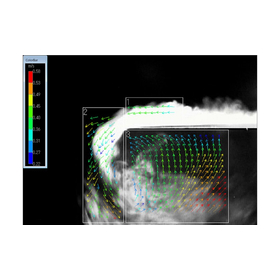Innovative transient absorption spectroscopy system based on the RIPT method.
picoTAS enables transient absorption measurements in the time range of 100 ps to ms, including "blank time periods" from 1 nanosecond to 20 nanoseconds, which were difficult to measure with conventional methods, using the new technology RIPT (Randomly Interleaved Pulse Train Method). Furthermore, because it can subtract the effects of luminescence, it allows for the observation of transient absorption signals in reaction systems that were previously unobservable, regardless of whether the samples are luminescent or non-luminescent. picoTAS opens up new avenues for photochemical research from fundamental studies to applications.
Inquire About This Product
basic information
<Features> - Completely covers blank time intervals (1ns to 20ns) - Transient absorption measurements from 100 picoseconds to milliseconds - Wide measurement wavelength range from visible to near-infrared - Solves fluorescence removal - Compact design, no optical bench required (-ns model) - Compatible with your existing pulse laser
Price range
Delivery Time
Applications/Examples of results
<Application> - Observation of transient absorption spectra of singlet/triplet excitations - Calculation of intersystem crossing rates - Tracking of electron transfer and charge separation dynamics - Observation of excimer formation and intermolecular reactions, and derivation of their rate constants - Analysis of reaction mechanisms in artificial photosynthesis, artificial solar cells, organic EL, etc.
catalog(1)
Download All CatalogsCompany information
Unisoku was established in 1974 with the aim of becoming a creator of unique measuring instruments. It is a manufacturer that primarily develops and sells its own ultra-high vacuum scanning probe microscopes (SPM) to universities, public institutions, and private companies and research institutes. Over the years, it has developed and commercialized advanced measuring instruments such as high-speed spectroscopic measurement devices and scanning tunneling microscopes, delivering them to universities and research institutions both domestically and internationally, and its technological content has received high praise from researchers in the field of basic research. In recent years, scanning probe microscopes have significantly improved in performance and multifunctionality, particularly as a means of observing sample surfaces at the atomic level. Their applications are expanding mainly from the field of physics to chemistry and bio-related fields, making them indispensable tools in nanotechnology and nanoscience.












